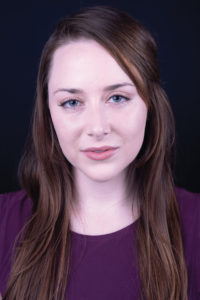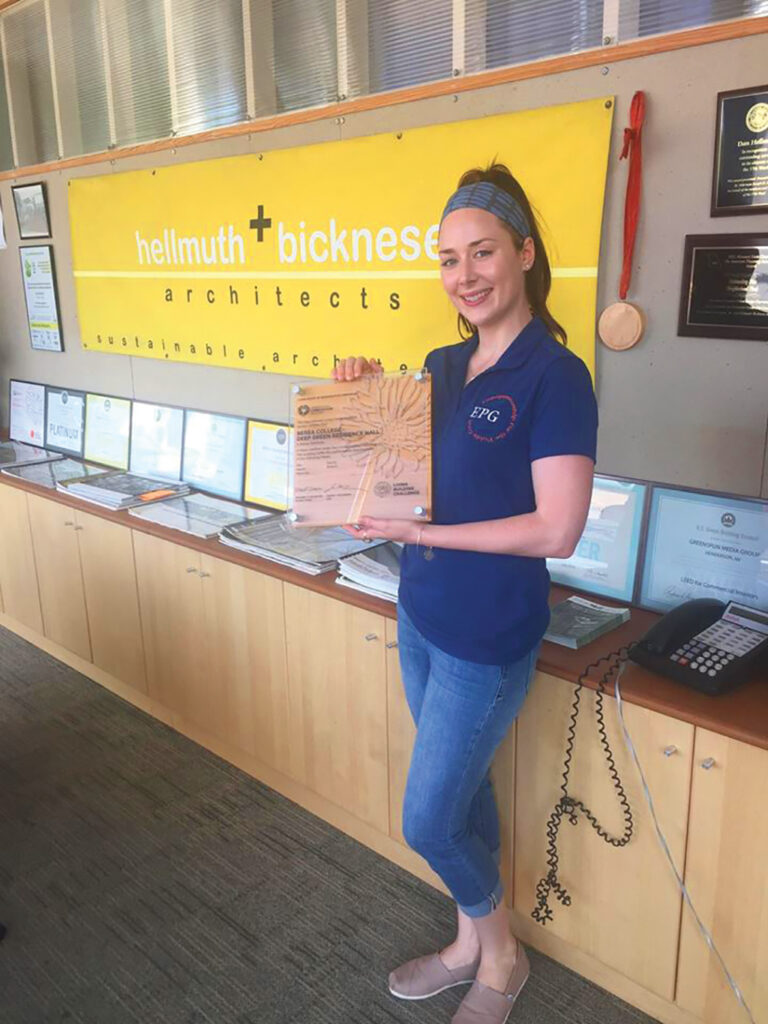Kayla Barbour ’19 desired an internship in the sustainable design field. She completed her DFE with Hellmuth + Bicknese Architects, the firm that designed Berea College’s Deep Green residence hall, the highest scoring LEED residence hall in the world at the time of its construction in 2013.
(Photo: Jennifer Lance ’20)
Kayla Barbour lives in a tiny house she and her father converted from an old construction office trailer. It serves two purposes. One is providing the 29-year-old non-traditional student a place of her own while she attends college. The other is to put her passion for sustainable living into practice.

Barbour, a technology and applied design (TAD) major, installed a compost tumbler she designed as a final project in one of her TAD classes and built a solar panel that “can’t even charge an iPhone,” but was good experience for her in terms of her aspirations to go into sustainable design.
Minoring in sustainability and environmental studies, Barbour is putting her passion to work in her labor assignment as well, where she serves as Waste Diversion Program coordinator in the Office of Sustainability. Her goal in that position is to encourage recycling and composting habits on campus any time there is an event with food. In conjunction, her senior capstone project is to design and install a sensor in the dining hall that will more accurately record food waste and make the data visually available to students eating there.
It is no surprise that when it came time to do her directed field experience, Barbour desired an internship in the sustainable-design field. The opportunity presented itself when Dan Hellmuth of Hellmuth + Bicknese Architects in St. Louis, Mo., visited campus. This was the firm that designed Berea College’s Deep Green residence hall, the highest scoring Leadership in Energy and Environmental Design (LEED) residence hall in the world at the time of its construction in 2013. Barbour approached Hellmuth about a directed field experience with his firm, and he accepted her proposal.
The following summer, Barbour began her position as a sustainable-design intern at the small firm, which only employs three full-time staff. While there, she created a new website for the firm; oversaw the tedious Living Building Challenge documentation for The College School’s Jan Phillips Learning Center; participated in design briefs, consultations with clients and site visits; and managed the office.
“While I was there, they had the grand reopening of the Gateway Arch, and our firm was the LEED consultant for the project,” Barbour said. “We got to meet a lot of ‘who’s who,’ including the Secretary of Interior.”
Another benefit to working with the firm was how it complemented what Barbour was already studying: environmental psychology and biophilic design. Biophilic design entails incorporating natural elements into built spaces.
“Hellmuth + Bicknese does a lot of design that’s focused on that, especially in schools and hospitals,” Barbour explained. “We live in this glass world with a lot of unnatural stuff, so biophilic design is reverting back to natural things. It’s about creating spaces that heal. I did a lot of that while I was there, like helping redesign their office space.”
The most important lesson, Barbour says, was learning to be flexible in terms of what her future career might look like.
“What I’m studying is applicable to many fields,” she said. “Every industry has room for sustainability and behavior systems. Anything we’re doing and interacting with has room for sustainable growth. I realized I can do a lot more than I originally thought.”


